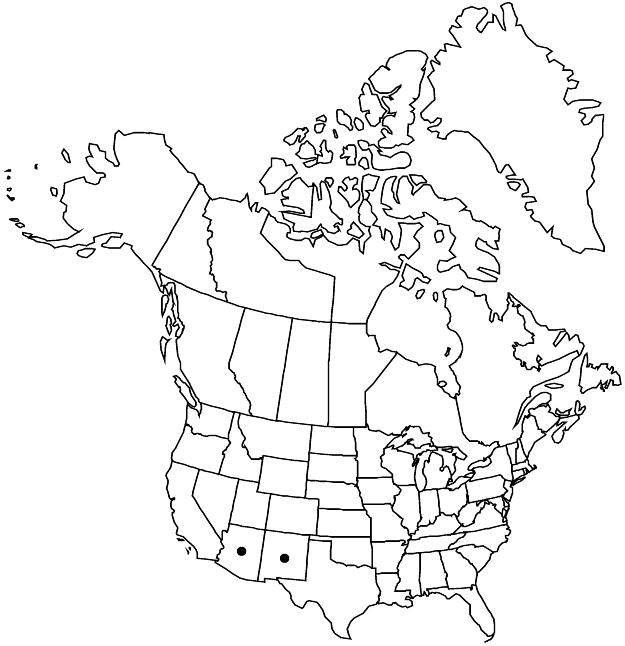Heuchera sanguinea
in F. A. Wislizenus, Mem. Tour N. Mexico, 107. 1848 ,.
Herbs acaulescent; caudex branched. Flowering stems 20–40 cm, short and sometimes long stipitate-glandular. Leaves: petiole long stipitate-glandular; blade reniform to orbiculate, shallowly 5–7-lobed, 2–5.5 cm, base cordate, lobes rounded, margins dentate, apex acute to obtuse, surfaces long stipitate-glandular on veins abaxially, glabrous or sparsely long stipitate-glandular adaxially. Inflorescences moderately dense to diffuse. Flowers: hypanthium weakly bilaterally to radially symmetric, free 2.5–2.8 mm, dark pink to red, broadly campanulate or urceolate, 4–8 mm, short stipitate-glandular proximally, sparsely long stipitate-glandular distally; sepals spreading, darker red-tipped, equal, 2–3 mm, apex oblong or rounded; petals spreading, pink or cream, narrowly oblanceolate, unlobed, 1.2–1.8 mm (shorter than sepals), margins entire; stamens included 1.5–3 mm; styles included 1.5–3 mm, 1.5–2 mm, 0.1+ mm diam. Capsules ovoid, 4.5–6 mm, beaks divergent, not papillose. Seeds dark brown, ellipsoid, 0.5–0.6 mm, bluntly spiny.
Phenology: Flowering Mar–Oct.
Habitat: Moist, shaded rocks
Elevation: 1200-2600 m
Distribution

Ariz., N.Mex., Mexico (Chihuahua).
Discussion
Heuchera sanguinea occurs in the southwestern United States and northern Chihuahua, Mexico, and is widely cultivated throughout the cooler parts of North America.
Heuchera sanguinea varies considerably within populations in shape, lobing, and size of leaves, in amount of hairs, and in shape, form, and color of flowers. Rydberg recognized var. pulchra as characterized by denser inflorescences and longer hairs on its pedicels, inferior part of the ovary, and sepals. Mixed populations with individuals bearing longer and shorter hairs can be found throughout the range of the species, especially in Arizona. It seems best to recognize H. sanguinea as a variable species without infraspecific taxa.
Selected References
None.